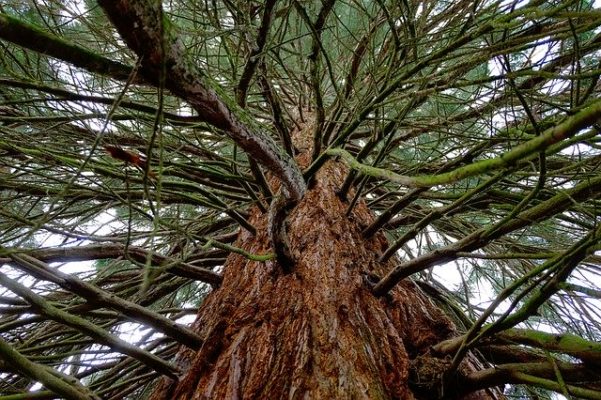The oldest trees on Earth have stood for nearly five millennia, and researchers have long wondered to what extent these ancient organisms undergo senescence, physically deteriorating as they age. A recent paper studying ginkgoes, one of the world’s longest-lived trees, even found that they may be able to “escape senescence at the whole-plant level,” raising questions about the apparent lack of aging in centuries-old trees. However, in a Forum published in the journal Trends in Plant Science, plant biologist Sergi Munné-Bosch argues that although signs of senescence in long-lived trees may be almost imperceptible to people, this does not mean that they’re immortal.
“When we try to study these organisms, we’re really astonished that they live so long. But this doesn’t mean that they’re immortal,” says Munné-Bosch, professor of plant physiology and leader of the ANTIOX research group at the University of Barcelona. “They live so long because they have many mechanisms to reduce a lot of the wear and tear of aging.”
Despite trees’ well-evolved methods of prolonging the aging process, research has shown that they still undergo physiological stress associated with senescence. “They have limits,” says Munné-Bosch. “There are physical and mechanical constraints that limit their ability to live indefinitely.”
However, due to the difficulty of conducting research on trees with such long lifespans, little is known about what the process of senescence looks like. Simply finding enough millennial trees to study can be challenging. “When a species of tree can live for five millennia, it’s very difficult to find even two trees that are between two and five millennia,” says Munné-Bosch. For these long-lived trees, dying of senescence is a possibility, but the probability of dying from other causes is significantly higher. “They don’t have to worry about senescence because they have other things that worry them more,” he says.
Furthermore, because of their extreme lifespans, the aging process of trees must be studied at a timescale much larger than scientists are used to. To see the real-time effects of aging on long-lived trees, scientists would have to conduct studies that last hundreds, if not thousands, of years: when trees like gingkoes can live for multiple millennia, even a 667-year-old organism, while undoubtedly long lived, may not be old enough to see the effects of aging. “The measure of time is something that we have invented as humans, and to a millennial tree, it does not matter at all,” Munné-Bosch says.
Trees have a variety of ways to reduce their chances of death from aging alone, from compartmentalizing risk in complex branch structures to “building life on death” by growing new shoots from trunks composed of 90% nonliving biomass. But in the review, Munné-Bosch maintains that even though long-lived trees can survive for millennia through these methods, the stress associated with aging, although little, will ultimately prevent immortality. “Time, in some respects, can be considered as a sort of stress. Living is stressful, and this very slowly will bring you to death,” he says.
While trees may not be immortal, Munné-Bosch says that studying the ways trees prolong senescence is important. Research conducted in trees and long-lived plant species can inform other disciplines, like medicine, in a variety of ways. “We have a lot to learn from them,” he says. “For instance, aspects of regenerative medicine are based on mechanisms that have already evolved in trees.” Although aging is not a universal process, the knowledge that even the oldest species cannot live forever means that “maybe we are not as different as we think,” says Munné-Bosch.
Read the paper: Trends in Plant Science
Article source: CellPress via EurekAlert
Image credit: Doreen Sawitza / Pixabay






